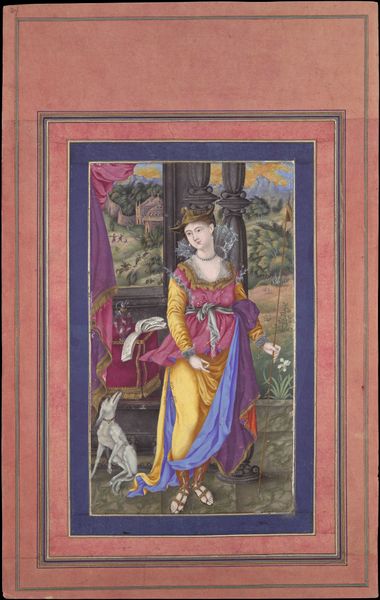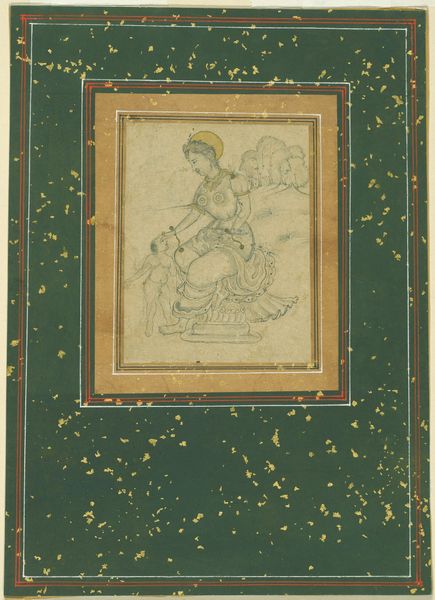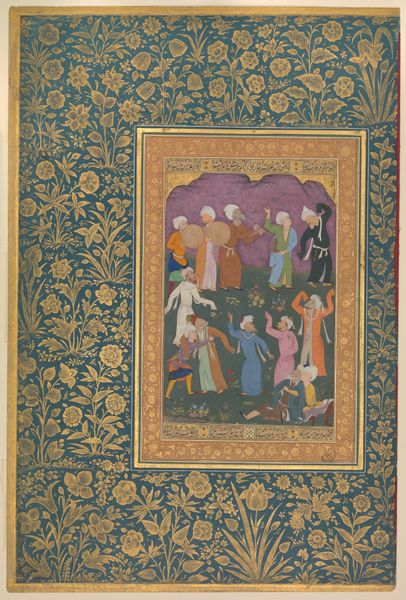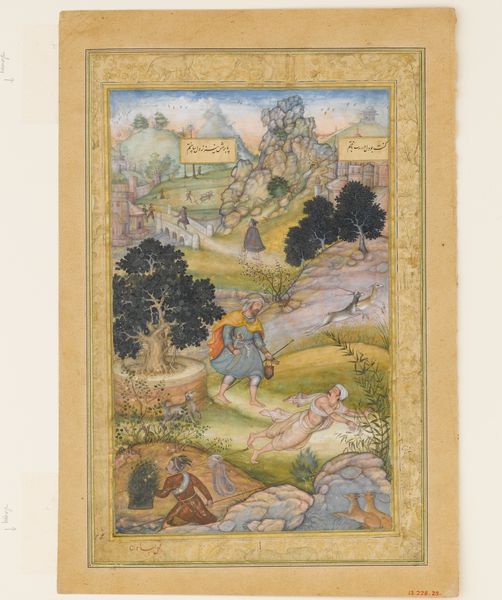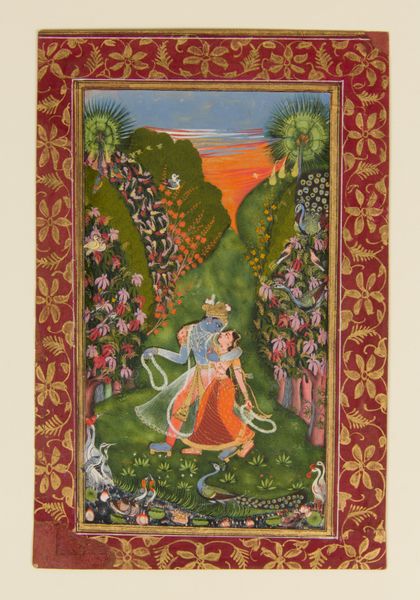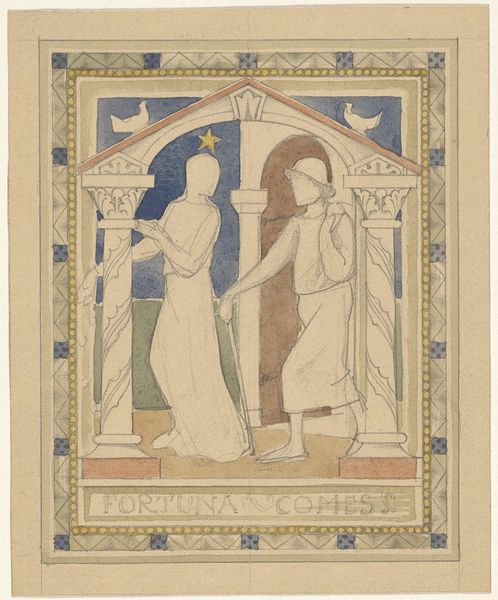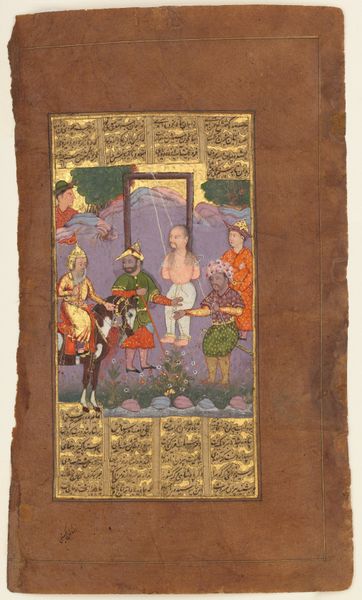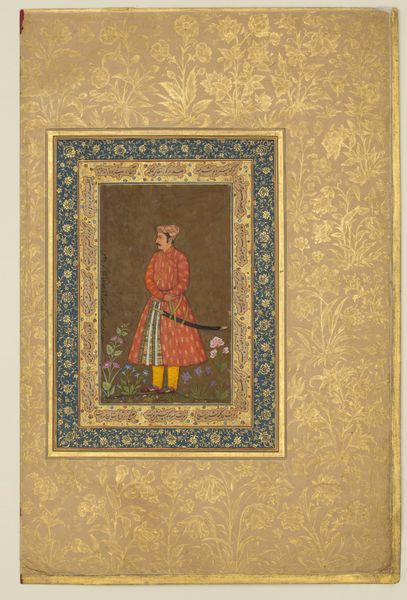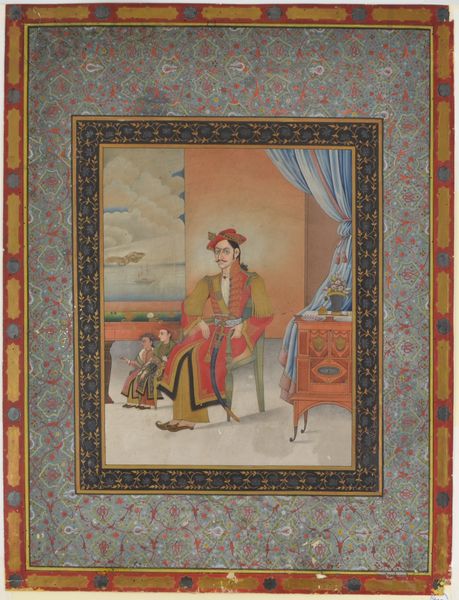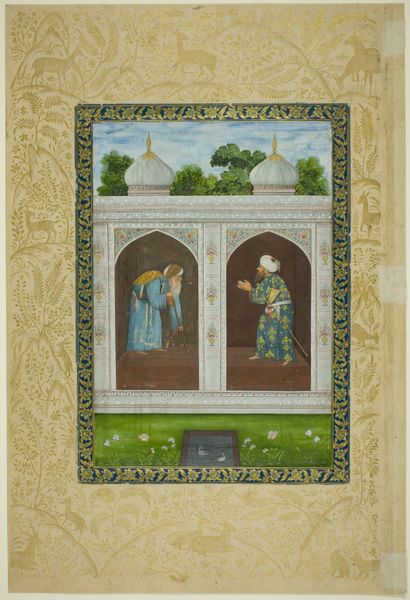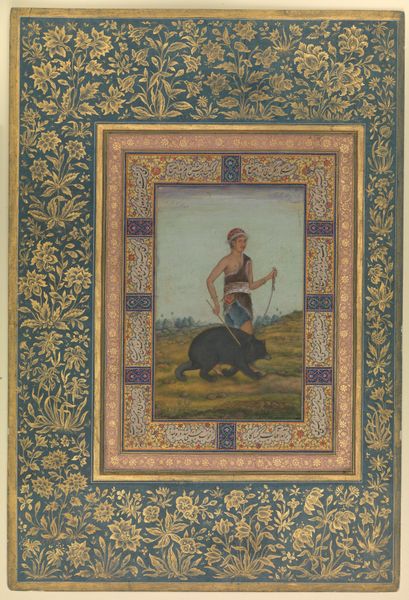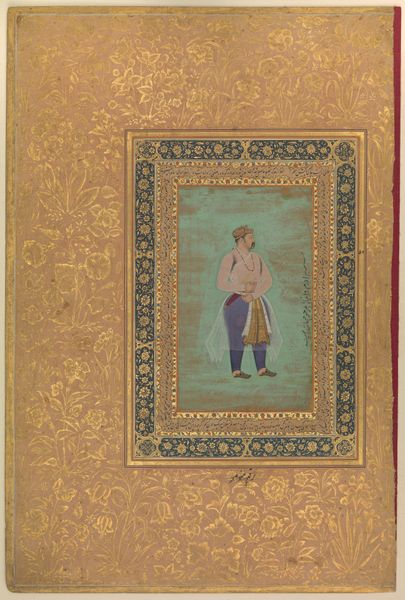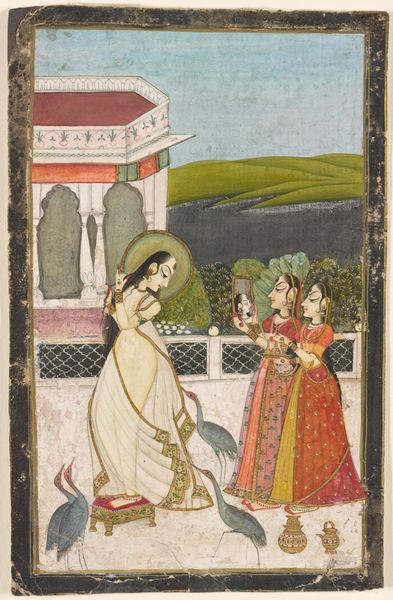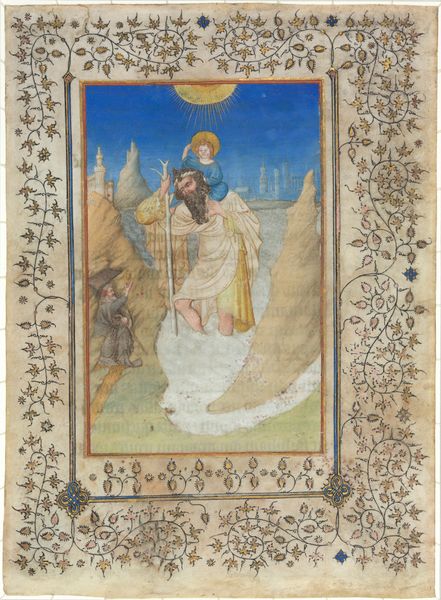
"Summer, from a Series of the Four Seasons", Folio from the Davis Album 1635 - 1695
0:00
0:00
painting, watercolor
#
portrait
#
water colours
#
painting
#
landscape
#
house
#
watercolor
#
men
#
islamic-art
#
genre-painting
#
miniature
Dimensions: Page: H. 13 1/8 in. (33.3 cm) W. 8 1/4 in. (21 cm) Mat: H. 19 1/4 in. (48.9 cm) W. 14 1/4 in. (36.2 cm)
Copyright: Public Domain
Curator: Here we have a page from the Davis Album titled "Summer, from a Series of the Four Seasons," likely painted between 1635 and 1695 by 'Ali Quli Jabbadar. It’s currently held at the Metropolitan Museum of Art. Editor: It's immediately striking! The colors are vibrant—that deep mauve skirt, the red top. The subject almost appears transplanted from a European painting into an Islamic miniature. Curator: Indeed, Jabbadar was known for incorporating European elements. Note the woman’s attire and features; they diverge from typical Persian depictions. It reflects the cultural exchange happening at the time, where artists were drawing inspiration from diverse sources, especially European engravings. Editor: So the very materials reflect that hybridity. I wonder about the pigments used—where they sourced locally, or were they importing European colors? And the paper itself, was it locally produced, or did its manufacture also involve external trade? These processes affect how the image lands on the page, its impact on us now. Curator: An important point. What intrigues me is how he interprets the season of summer. Instead of a literal portrayal of laboring in fields under the sun, we have a relaxed figure, suggesting perhaps a more idealized, leisurely view of the season, as it relates to elite pastimes. She carries a basket, but does she work? Editor: Maybe. The water mill is also telling; it's about exploiting the power of natural resources but with an eye for picturesque effect. There are social ramifications to the way we imagine labor here. Were watercolours commonly available for artworks at the time? The fluidity, luminosity and subtle blending really give a lightness of being to the overall composition. Curator: Precisely. Watercolor was favored for its delicacy and precision, fitting for the refined tastes of the court. Also, it may seem odd but this woman standing larger in the front creates a type of portrait, of power in some form and even though she's a "commoner" she still is given an important part in this Islamic painting. Editor: It gives the folio a compelling character. The scale feels intimate, yet its reach touches upon broader ideas about cultural exchange and representation of nature and labor. Curator: I agree completely, a cultural bridge to history of the Islamic world.
Comments
No comments
Be the first to comment and join the conversation on the ultimate creative platform.
